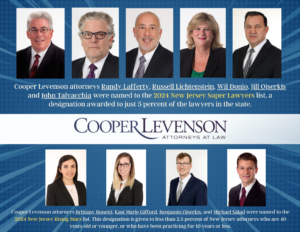On February 24, 2022, the Internal Revenue Service (“IRS”) proposed regulations (the “Proposed Regulations”) that supplement and revise required minimum distributions (“RMDs”) regulations, including clarifying the Setting Every Community Up for Retirement Enhancement Act of 2019 (the “SECURE Act”).
Upon enactment of the SECURE Act, we outlined the most significant changes and impacts to retirement planning. Prior to enacting the SECURE Act, a non-spousal beneficiary of a qualified retirement plan, such as an individual retirement accounts, a 401(k) or a 403(b) account, could stretch distributions over their life expectancy based on a chart published by the IRS without implicating RMDs. However, the SECURE Act required a non-spouse beneficiary of a qualified retirement plan to withdraw all of the funds within ten years after the year in which the account owner passes away unless the beneficiary is an “Eligible Designated Beneficiary.”
The SECURE Act defined an Eligible Designated Beneficiary to include surviving spouses, individuals who are disabled or chronically ill, persons not more than ten years younger than the deceased account owner and minor children of the deceased account holder. The Proposed Regulations clarify who is considered an Eligible Designated Beneficiary, including the decedent’s minor children who would be deemed minors until attaining 21 years of age, regardless of the age of majority defined by state laws. This proposal provides minors the ability to use the ‘stretch’ RMD rules until their 21st birthday, then become subject to the ten-year withdrawal rule and RMDs.
The SECURE Act changed the definition of the “required beginning date” (“RBD”) for retirement account participants to withdraw their first RMD from age “70½” to age “72.” The Proposed Regulations apply to Eligible Designated Beneficiaries, non-eligible designated beneficiaries and non-designated beneficiaries. “Eligible Designated Beneficiaries” must be individuals. If a retirement account participant names a trust as a beneficiary, and the trust is not considered a “see-through” trust, the beneficiary is considered a “non-designated beneficiary.” An Eligible Designated Beneficiary may elect to receive (i) payments beginning in the year after the participant’s death over the beneficiary’s lifetime, or (ii) the entire amount by the end of the calendar year including the tenth anniversary of the participant’s death. If a participant dies prior to the participant’s RBD, a non-eligible designated beneficiary must receive the entire amount of the retirement account by the end of the calendar year of the tenth anniversary of the participant’s death. The Proposed Regulations provide that non-eligible designated beneficiaries who inherited from participants who died on or after the participant’s RBD would be required to receive RMDs and withdraw the entire amount of the retirement account by the end of the calendar year of the tenth anniversary of the participant’s death. This is a significant change and was unanticipated by tax practitioners.
A non-designated beneficiary must receive the entire amount of the retirement account at the end of the fifth anniversary of the participant’s death. If a participant dies after their RBD, RMDs are contingent on the beneficiary classification, as distinguished above.
The “proposed” treasury regulations are subject to a public comment period, which is generally at least 30 days. Then, a public hearing may be held if a sufficient number of requests to speak at a hearing are received. To ensure proper planning and to gain an understanding of potential tax implications, consultation with experienced tax practitioners is critical.
Craig Panholzer is an associate in Cooper Levenson’s Business & Tax practice group in its Florida office. He concentrates his practice on business transactions, estate planning, special needs planning, probate and tax matters.
Michael Salad is a partner in Cooper Levenson’s Business & Tax practice group. He concentrates his practice on estate and asset protection planning, special needs planning, business transactions, mergers and acquisitions and tax matters. Michael holds an LL.M. degree in Estate Planning and Elder Law. Michael is licensed to practice law in Florida, New Jersey, New York, Pennsylvania, Maryland, Connecticut and the District of Columbia.









